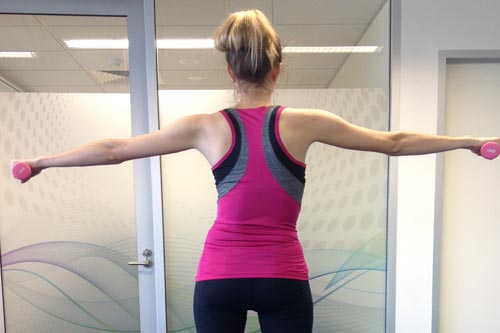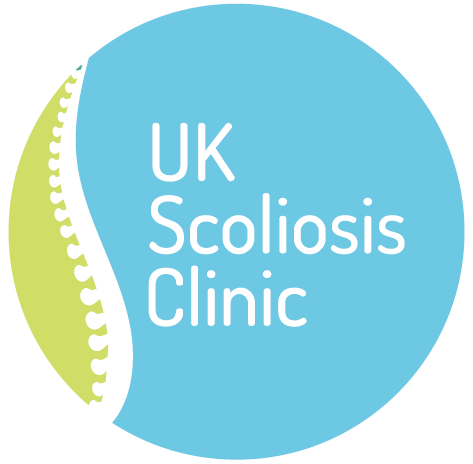Explore Treatments
Learn More
SEAS

SEAS is the acronym for “Scientific Exercise Approach to Scoliosis” – SEAS is the name given to the continual process of evaluation and improvement in physiotherapy-based approaches to scoliosis treatment, based on results published in the latest scientific studies.
What is SEAS?
Like most forms of exercise-based treatment, SEAS consist of an individualized exercise program adapted for the purpose of treating scoliosis. SEAS treatment is often used as a stand-alone approach in lower degree curves, and as a compliment to bracing with large curves and where there is a significant risk of progression.
The objective of SEAS exercise is to promote self-correction of the scoliotic posture, using exercises which are often incorporated into a broader exercise program designed to improve overall function and lessen the symptoms of scoliosis.
Unlike other therapies, the SEAS methodology is constantly evolving, so seeking out a practitioner who demonstrates familiarity with the latest research is especially important.
Our analysis
SEAS is an approach to scoliosis exercise treatment with a strong grounding the most modern approaches in physiotherapy SEAS treatment programs are usually constructed by a practitioner, who will then teach the patient their individual routine. After this, SEAS can be performed at home.
SEAS is also used alongside bracing treatment and is indicated especially for avoiding a loss of correction after the conclusion of treatment with a brace. A 2008 study showed that post-brace patients treated with SEAS experienced no loss of correction after 2.7 years.[1]
Learn more
-
How does SEAS work?
SEAS exercises have the following two main objectives. Firstly, the exercises aim to improve the stability of the spine. Secondly, they aim to improve the various symptoms which are common amongst scoliosis sufferers, typical problems addressed by SEAS related to strength, muscular retraction, motor coordination, balance etc. [2]
-
How effective is SEAS?
Studies have indicated that SEAS can be effective in reducing the progression of scoliosis and avoiding the need for bracing or surgery in curves below 25°[3], however like most exercise-based approaches, evidence suggests that the very best outcomes can be achieved by combining SEAS with bracing, and with other methodologies such as Schroth.[4]
Some evidence suggest that SEAS may be especially effective in reverting the progression of adult scoliosis.[5]
-
When to choose SEAS
The SEAS approach is an effective individual treatment for curves below 25 degrees and combines well with bracing and other exercise methodologies as part of an individualised exercise program. SEAS can be especially effective as a method to prevent loss of correction after bracing.
-
Research and References
Sources for further research
TB Grivas, ES Vasiliadis, C Maziotou, OD Savvidou, The direct cost of Thriasio school screening program. Scoliosis 2(1) (2007) 7.
TB Grivas, MH Wade, S Negrini, JP O’Brien, T Maruyama, M Rigo, HR Weiss, T Kotwicki, ES Vasiliadis, LS Neuhaus, T Neuhous, School Screening for Scoliosis. Where are we today? Proposal for a consensus. Scoliosis 2(1) (2007) 17
WP Bunnel, Selective screening for scoliosis. Clin Orthop Relat Res 434 (2005) 40-5
T.B. Grivas et al. “How to Improve the Effectiveness of School Screening for IS” The Conservative Scoliosis Treatment (2008) p 120
References for this page
[1] Fabio Zaina et al. Specific exercises performed in the period of brace weaning can avoid loss of correction in Adolescent Idiopathic Scoliosis (AIS) patients (Winner of SOSORT's 2008 Award for Best Clinical Paper) Scoliosis 2009 4:8
[2] Alessandra Negrini et al. SEAS exercises revert progression of adult scoliosis: a retrospective long-term study, Scoliosis 2009: 4 (Suppl 1) :O55
[3] Monticone M et al. Active self-correction and task-oriented exercises reduce spinal deformity and improve quality of life in subjects with mild adolescent idiopathic scoliosis. Results of a randomised controlled trial. Eur Spine J. 2014;23(6):1204–14.
[4] Dimitris Papadopoulos Adult scoliosis treatment combining brace and exercises, Scoliosis 2013:8 (Suppl 2) :O8
[5] Alessandra Negrini et al. SEAS exercises revert progression of adult scoliosis: a retrospective long-term study, Scoliosis 2009: 4 (Suppl 1) :O55
Need advice?
Learn more about scoliosis and book a free consultation at the UK Scoliosis Clinic .
Learn More